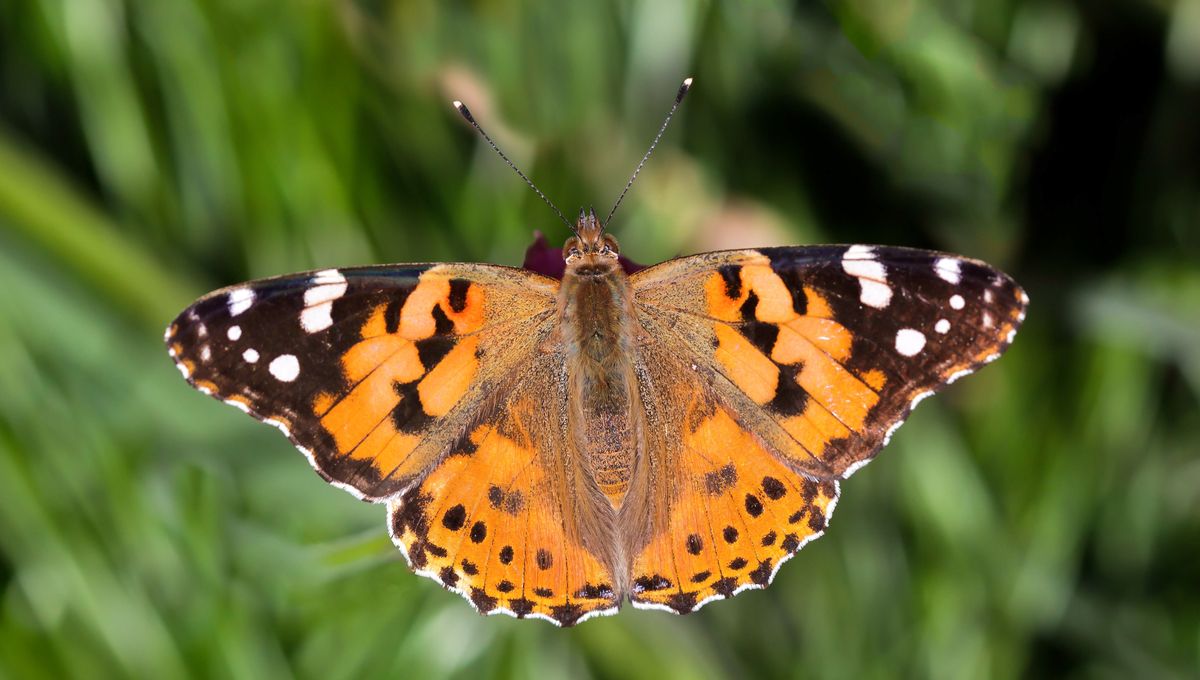
Painted lady butterflies (Vanessa cardui) aren’t exactly strangers to long journeys across land, but for the first time ever, scientists have shown they’re also capable of making non-stop flights across oceans, having mapped the insects migrating a whopping 4,200 kilometers (2,610 miles) across the Atlantic.
The first indication of these transatlantic flights came back in October 2013, when researcher Gerard Talavera spotted several painted lady butterflies on a beach in French Guiana. Those that were found alive were visibly resting and all had damage to their wings, but that wasn’t what was unusual – these butterflies aren’t normally found in South America.
Given their reputation as long-distance migrators and their tattered wings, the colorful insects had likely been on quite the journey. Was it one that took them across the ocean?
Talavera and an international research team set to answer this question using a whole host of techniques; you can’t put a tracker on a butterfly like you would a bird, so they had to get creative.
DNA testing first showed the specimens on the beach were related to populations in Europe and Africa, ruling out the team’s initial theory that the butterflies had come from North America, the nearest place they are typically found.
They also DNA tested grains of pollen found on the butterflies, which turned out to be from plants that are only found in the Sahel region of Africa, suggesting they had indeed flown across the Atlantic Ocean – but using a novel technique called isotope-based geolocation, the team discovered the insects’ journey may not have begun there.
“The painted lady butterflies reached South America from West Africa, flying at least 4,200 km over the Atlantic,” explained study co-author Clément Bataille in a statement. “But their journey could have been even longer, starting in Europe and passing through three continents, implying a migration of 7,000 km [4,350 miles] or more. This is an extraordinary feat for such a small insect.”
But as the person in charge of paying for an airline’s fuel would tell you, flying non-stop across the Atlantic is energy-expensive, so how did an insect with a wingspan little bigger than a matchstick manage to do it?
It turns out that in the time preceding the discovery of the butterflies in French Guiana, there had been sustained, favorable wind currents from Africa across the Atlantic. This meant that the butterflies would’ve been able to make a non-stop journey over the ocean in around five to eight days; without the winds, they’d only have lasted around 780 kilometers (485 miles).
“The butterflies could only have completed this flight using a strategy alternating between minimal effort to avoid falling into the sea, facilitated by ascending winds, and active flight, which requires more energy consumption,” said study author Eric Toro-Delgado.
Even taking that into account, it’s still quite the achievement for these small insects.
“We tend to see butterflies as a symbol of the fragility of beauty, but science shows us that they can perform incredible feats,” concluded study co-author Roger Vila.
The study is published in Nature Communications.
Source Link: World-First Evidence Shows Butterflies Can Fly Over 4,000 Kilometers Across The Atlantic Ocean